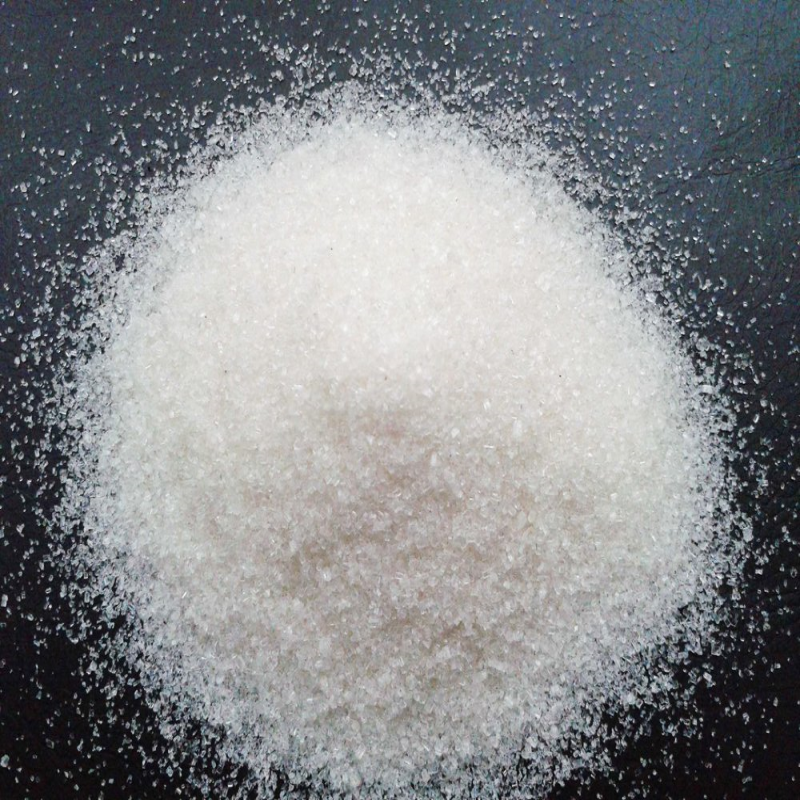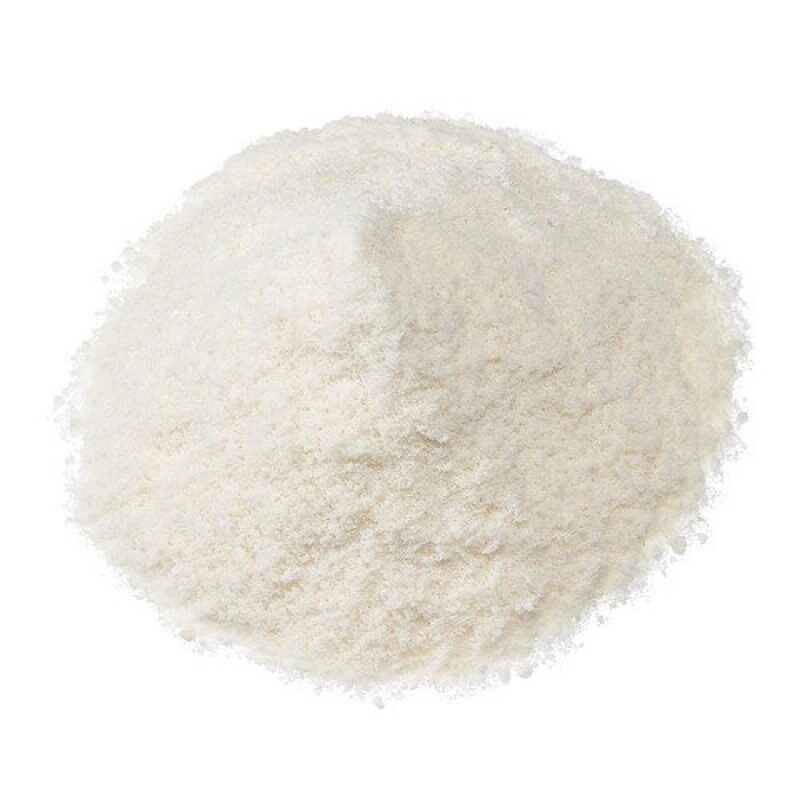Description
Remarks: The material complies as per above specification.
Uses: Malic acid is a chemical found in certain fruits and wines. It is sometimes used as medicine. Malic acid is used most commonly for dry mouth. It is also used for fibromyalgia, fatigue, and skin conditions
Packing: 25 kg HDPE Bags/HDPE Drum.
For AMIZARA SPECILITY CHEMICALS LLP
MSDS
Malic Acid GHS SDS, Safety Data Sheet MSDS Sheet, Material Safety Data Sheet
Section 1:Product Identification
| Product Name & Other Names |
Malic Acid or DL-Hydroxysuccinic acid or DL Malic Acid or (±)-2-Hydroxysuccinic acid. |
| CAS No. |
6915-15-7, ( 617-48-1) |
| EINECS EC-No |
230-022-8 |
| Molecular Weight |
134.09 |
| Chemical Formula |
C4H6O5 |
| Relevant uses and uses advised against (if any) |
Industrial Manufacturing. |
| Suppliers |
As per the letterhead. |
SECTION 2 : Hazards Identification
GHS, Globally Harmonized System Classification in accordance with 29 CFR 1910 Classification according to Regulation (EC) No 1272/2008
| Acute toxicity Oral |
Category 4 |
| Skin corrosion/irritation |
Category 2 |
| Serious eye damage/eye irritation |
Category 2A |
| Specific target organ toxicity, single exposure; Respiratory tract irritation |
Category 3 |
Labelling according to GHS and Regulation (EC) No 1272/2008
Hazard statements
| H302 |
Harmful if swallowed. |
| H315 |
Causes skin irritation. |
| H319 |
Causes serious eye irritation. |
| H335 |
May cause respiratory irritation. |
Precautionary statements
| P262 |
Do not get in eyes, on skin, or on clothing. |
| P264 |
Wash skin thoroughly after handling. |
| P280 |
Wear protective gloves/protective clothing/eye protection/face protection. |
| P270 |
Do not eat, drink or smoke when using this product |
| P273 |
Avoid release to the environment. |
| P330 |
Rinse mouth. |
| P362 |
Take off contaminated clothing and wash before reuse. |
| P301+312: IF SWALLOWED |
Call a POISON CENTER or doctor/physician if you feel unwell. |
| P332+313:If skin irritation occurs |
Get medical advice/attention. |
| P302+ P352 – IF ON SKIN |
Wash with plenty of soap and water. |
| P305+P351+P338 |
IF IN EYES: Rinse cautiously with water for several minutes.
Remove contact lenses, if present and easy to do. Continue rinsing. |
| P332+313:If skin irritation occurs: |
Get medical advice/attention. |
| P337+P313 If eye irritation persists |
Get medical advice/ attention. |
| P501 |
Dispose of contents/container to authorized agents only. |
Classification according to EU Directives 67/548/EEC or 1999/45/EC:
Hazard Symbol:
Risk Phrases:
| R36/37/38 |
Irritating to eyes, respiratory system, and skin. |
| R43 |
May cause sensitization by skin contact. |
Section 3: Composition / Information on Ingredients
| Product Name & Other Names |
Malic Acid or DL-Hydroxysuccinic acid or DL Malic
Acid or (±)-2-Hydroxysuccinic acid. |
| CAS No |
6915-15-7 (617-48-1) |
| EINECS EC-No |
230-022-8 |
SECTION 4: First Aid Measures
Always get medical attention after the first aid is over.
| Inhalation |
If Malic Acid is inhaled, remove to fresh air. If not breathing, give artificial respiration. If breathing is difficult, give oxygen and get medical attention immediately. |
| Ingestion |
Never give anything by mouth to an unconscious person. Get medical attention. |
| Skin Contact |
Immediately flush skin with plenty of water for at least 15 minutes while removing contaminated clothing and shoes.
Get medical attention. Wash clothing and shoes before reuse. |
| Eye Contact |
Immediately flush eyes with plenty of water for at least 15 minutes, lifting lower and upper eyelids occasionally. Get medical attention immediately. |
SECTION 5 : Fire Fighting Measures
| Fire |
As with most organic solids, fire is possible at elevated temperatures or by contact with an ignition source. |
| Explosion |
Fine dust dispersed in air in sufficient concentrations, and in the presence of an ignition source is a potential dust explosion hazard. |
| Fire Extinguishing Media |
Water spray, dry chemical, alcohol foam, or carbon dioxide. |
| Special Information |
In the event of a fire, wear full protective clothing and NIOSH-approved self-contained breathing apparatus with full face piece operated in the pressure demand or other positive pressure mode. |
SECTION 6: Accidental Release Measures
Methods and materials used for containment Cleanup procedures and Storage
| Personal precautions, protective equipment and emergency procedures |
Avoid breathing dust/fumes/gas/mist/vapors/spray. Use individual protective equipment (waterproof boots, suitable protective clothing, safety glasses, etc.).
Restrict unprotected personnel from the area. Prevent any contact with hot surfaces. Do not approach facing the wind. Do not touch the spilled material. |
| Environmental precautions |
Do not let the product enter drains, soil, or water sources |
| Small Spill |
Use appropriate tools to put the spilled solid in a convenient waste disposal container. |
| Large Spill |
Contain spilled material. Do not let the product enter drains. Use a shovel to put the material into a convenient waste disposal container.
Finish cleaning by spreading water on the contaminated surface and allow evacuating as per law. Eliminate all ignition sources. |
SECTION 7:Handling and Storage
| Precautions for safe handling |
Apply according to good manufacturing and industrial hygiene practices. Ensure proper ventilation. In case of insufficient ventilation, wear suitable respiratory equipment.
Wash thoroughly after handling. Do not drink, eat, or smoke while handling. Avoid contact with skin, eyes, and clothing. Minimize dust generation.
Avoid breathing dust/fumes/gas/mist/vapors/spray. Avoid contact with eyes, skin, and clothing. Keep container tightly closed.
Avoid ingestion and inhalation. Use individual protective equipment (waterproof boots, suitable protective clothing, safety glasses, etc.). Prevent any contact with hot surfaces. |
| Conditions for safe storage, including any incompatibilities |
Store in cool, dry, and ventilated area away from heat sources and protected from sunlight in tightly closed original container. Keep air contact to a minimum.
Store protected from heat, sparks and ignition sources and incompatible materials. Avoid contact with skin and eyes.Avoid inhalation of dust/mist/vapor.
Do not store with incompatible materials like strong oxidizing agents and bases. Avoid ignition sources and electrostatic discharge. |
SECTION 8: Exposure Controls/Personal Protection
| Airborne Exposure Limits: |
None established. |
| Ventilation System |
A system of local and/or general exhaust is recommended to keep employee exposures as low as possible.
Local exhaust ventilation is generally preferred because it can control the emissions of the contaminant at its source, preventing dispersion of it into the general work area.
Please refer to the ACGIH document, Industrial Ventilation, A Manual of Recommended Practices, most recent edition, for details. |
| Personal Respirators (NIOSH Approved) |
For conditions of use where exposure to dust or mist is apparent and engineering controls are not feasible, a particulate respirator (NIOSH type N95 or better filters) may be worn.
If oil particles (e.g. lubricants, cutting fluids, glycerin, etc.) are present, use a NIOSH type R or P filter.
For emergencies or instances where the exposure levels are not known, use a full-face positive-pressure, air-supplied respirator.
WARNING: Air-purifying respirators do not protect workers in oxygen-deficient atmospheres. |
| Skin Protection |
Wear impervious protective clothing, including boots, gloves, lab coat, apron or coveralls, as appropriate, to prevent skin contact. |
| Eye Protection |
Use chemical safety goggles and/or full face shield where dusting or splashing of solutions is possible. Maintain eye wash fountain and quick-drench facilities in work area. |
SECTION 9: Physical and Chemical Properties
| Appearance |
Malic Acid is white to off-white crystals or powder. |
| Odor |
Faint acidulous odor. |
| Odor threshold |
Not available. |
| pH |
Approximately 2, Acidic. |
| Relative density |
around 1.6 |
| Melting Point |
131 – 133 °C – lit. |
| Initial boiling point and boiling range |
Not available |
| Flash point |
Not available. |
| Auto-ignition temperature |
340C |
| Decomposition temperature: |
Not available |
| Upper/lower flammability or explosive limits |
Not available. |
| Vapor pressure |
Not available. |
| Vapor density: |
Not available. |
| Evaporation rate |
Not available. |
| Flammability (solid, gas) |
Not available. |
| Partition coefficient:n-octanol/water |
Not available. |
| Solubility |
Soluble in water. |
| Viscosity |
Not available. |
| Molecular Weight |
134.09 |
| Chemical Formula |
C4H6O5 |
SECTION 10. Stability and Reactivity
| Stability |
Stable under ordinary conditions of use and storage. |
| Hazardous Decomposition Products |
Carbon dioxide and carbon monoxide may form when heated to decomposition. |
| HazardousPolymerization |
Will not occur. |
| Incompatibilities |
Excessive heat, Strong oxidizers. |
| Conditions to Avoid |
Heat, dusting and incompatibles. |
SECTION 11:Toxicological Information
Toxicity to Animals:
| LD50 Oral – Rat |
male and female – 3.500 mg/kg |
| LD50 Intraperitoneal– Rat |
100 mg/kg |
| LD50 Intraperitoneal – Mouse |
50 mg/kg |
| Carcinogenicity |
No component of this product present at levels greater than or equal to 0.1% is identified as possible or confirmed human carcinogen by IARC, ACGIH, OSHA and NTP. |
| Teratogenic Effects |
Not available. |
| Mutagenic Effects |
Not available. |
| Developmental Toxicity |
Not available. |
| Reproductive Effects |
No information available. |
SECTION 12. Ecological Information
Toxicity
| Toxicity to daphnia and other aquatic invertebrates |
Immobilization LC50 – Daphnia magna (Water flea) – ca. 240 mg/l – 48 h |
| Mobility in soil: |
No data available |
| PBT & vPvB |
This substance/mixture contains no components considered to be either
persistent, bioaccumulative and toxic (PBT), or very persistent and very
bioaccumulative (vPvB) at levels of 0.1% or higher. |
SECTION 13. Disposal Considerations
Whatever cannot be saved for recovery or recycling should be managed in an appropriate and approved waste disposal facility. Processing use or contamination of this product may change the waste management options. State and local disposal regulations may differ from federal disposal regulations. Dispose of container and unused Malic Acid in accordance with legal requirements.
SECTION 14. Transport Information
| DOT |
Not regulated |
| IATA |
Not regulated |
| IMDG/IMO |
Not regulated |
| ADR/RID |
Not regulated |
SECTION 15. Regulatory Information
USA:
| SARA 313 |
Not applicable |
| SARA 311/312 |
Acute Health Hazard |
| California Proposition 65 |
This product does not contain any Proposition 65 chemicals. |
SECTION 16:Other Information
European Labeling in Accordance with EC Directives
| H302 |
Harmful if swallowed. |
| H315 |
Causes skin irritation. |
| H319 |
Causes serious eye irritation. |
| H335 |
May cause respiratory irritation. |
Classification according to EU Directives 67/548/EEC or 1999/45/EC
Hazard Symbol
Risk Phrase
| R36/37/38 |
Irritating to eyes, respiratory system, and skin. |
| R43 |
May cause sensitization by skin contact. |
Disclaimer:
Our company provides this Malic Acid SDS sheet in good faith but makes no representation as to its comprehensiveness or accuracy. This MSDS sheet is intended only as a guide to the appropriate precautionary handling of the material by a properly trained person using this product. The above information has been compiled from various sources and has the possibility of discrepancy and being out-dated information. Individuals receiving the information must exercise their independent judgment and do further search in determining its appropriateness for a particular purpose. In no case shall our company be liable to loss or damages by the product user.




